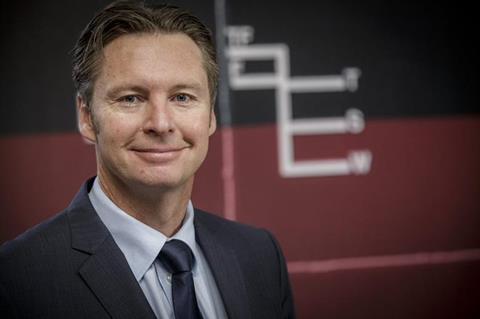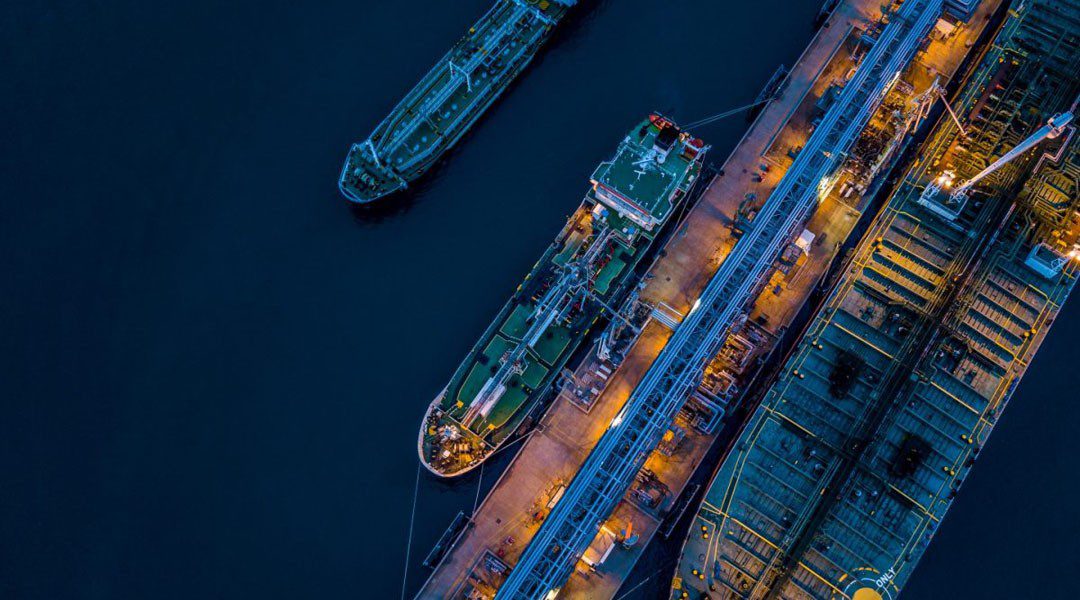The ceo of DNV Maritime, Knut Ørbeck-Nilssen, reiterates his call for greater collaboration, and notes that the multi-faceted nature of the energy transition will require bridge building with stakeholders outside the industry.
Speaking to The Motorship shortly after DNV’s Fuel of the Future conference, Mr. Ørbeck-Nilssen directly addresses what he described as “the grand challenge” of decarbonising the maritime industry.
Grand challenges can be broadly described as challenges that require the mobilisation of a range of different stakeholders from different disciplines from within the shipping and maritime industries to resolve. A classic example is the development of solutions for the accurate measurement of longitude, for historically minded readers.
In common with other grand challenges, the solution will not only require contributions from stakeholders across the maritime industry, but also require contributions from outside sectors.
Mr. Ørbeck-Nilssen is more interested in the broad mobilisation and innovation that underpinned the first ‘Moonshot’, which was the result of the Apollo programme. Unlike the purely technological challenge of the Apollo programme, the challenge of decarbonisation is a much more complex problem.
“DNV has a unique position in this way because we are engaged already with the oil and gas sector, we are engaged with the renewables sector. And we see now that the interconnectivity between these different industry sectors is increasing as we have to solve this grand challenge… which is really all about reducing the CO2 emissions.”

Source: DNV
Knut Ørbeck-Nilssen, ceo of DNV Maritime compares the ‘grand challenge’ of decarbonising shipping tothat posed by the Apollo programme.
The scale of the upcoming change was likely to affect a wide number of stakeholders, ranging from the insurance and ship finance communities, through to regulatory authorities and beneficial cargo owners. “We have seen an encouraging increase in engagement from the stakeholder community over the past couple of years,” Mr. Ørbeck-Nilssen says, adding that this has resulted in tangible results, such as the Poseidon Principles in the ship finance community.
Even faster progress has been seen in the field of technology. “In terms of shipboard technology, I would say that we are doing fairly well… I mean, LNG is already there, methanol is already there and in a few years’ time, we will have a multitude of different solutions available when ammonia becomes commercially available.”
However, the key factors that need to be addressed in the energy transition will remain fuel availability, the creation of efficient fuel distribution networks, and most importantly, the safety of the networks. “We have to look beyond the immediate shipping and maritime ecosystem to include the utility companies producing the energy, the upstream companies that provide the oil and gas.” And that is really what has and is changing, we need to span out in our collaboration.
Turning ESG talk into action
Mr. Ørbeck-Nilssen addresses some of the push factors that are focusing stakeholders’ attention upon decarbonisation goals, including the steady evolution of corporate social responsibility over recent years. “The ESG revolution has put [CSR] centre stage for corporations… and moved the focus onto performance.”
However, the need for demonstrable performance improvements was likely to create a demand for these improvements to be validated. This will go beyond the requirement by Poseidon Principle banks to have visibility of the performance of assets in their portfolio: the introduction of Scope 3 emissions reporting will require all the world’s major corporations to document the performance of their whole value chain. “This is a good opportunity for DNV to leverage trust into this system.”
Accelerating change
Warming to his theme of grand challenges, Mr. Ørbeck-Nilssen notes that one of the lessons from the past was that grand challenges required innovation across sectors, across actors and across disciplines.
Musing about the number of attendees at the Fuel of the Future conference, Mr. Ørbeck-Nilssen noted that it hopefully included recent graduates and students who would be inspired to contribute to the development of solutions, just as the young Englishman John Harrison had been when the Longitude Act was passed in 1714.
More immediately, Mr. Ørbeck-Nilssen noted that encouraging the development of a range of different solutions was an integral part of responding to the challenge.
“What we really need to do now is to demonstrate concrete steps that take us in the right direction, putting one foot ahead of the other. And that is really what is needed.”
While Mr. Ørbeck-Nilssen expressed impatience with the need to develop the solutions needed by the industry, he singled one particular recent declaration – the Clydebank Declaration at the recent COP26 summit in Glasgow – as making a real contribution to the industry.
By encouraging the rapid establishment of green corridors between two countries or ports, it would allow the early introduction of low carbon or zero carbon trading routes. “By making it happen on a smaller scale, we would have the possibility to experiment, to pilot, to gain experience with these new solutions.” Such green routes could represent a sandbox for the development of solutions at a small scale, without having to focus on the different challenges posed by scaling up solutions immediately.
Turning his attention to broader challenges relating to fuel supply, Mr. Ørbeck-Nilssen noted that this would also help to mitigate the risk that the development of solutions could be delayed by chicken and egg type problems relating to fuel supply or bunkering infrastructure. “It has taken us 20 years for LNG-fuelled propulsion to reach 3% of the global fleet tonnage.”
While dedicated R&D funds represented one particular route to incentivising the development of solutions, closer cooperation between different stakeholders represented another potential solution.
“This is what we did last year, when we set up the Maritime Technology Forum with three other leading class societies and three flags all together. The whole idea is to leverage the output from the R&D efforts that we are individually undertaking… [by] a factor of seven. To solve this, we could really benefit from putting competition a little bit to the side and rather concentrate on producing good guidance and good progress. That is what the MTF is all about.”





